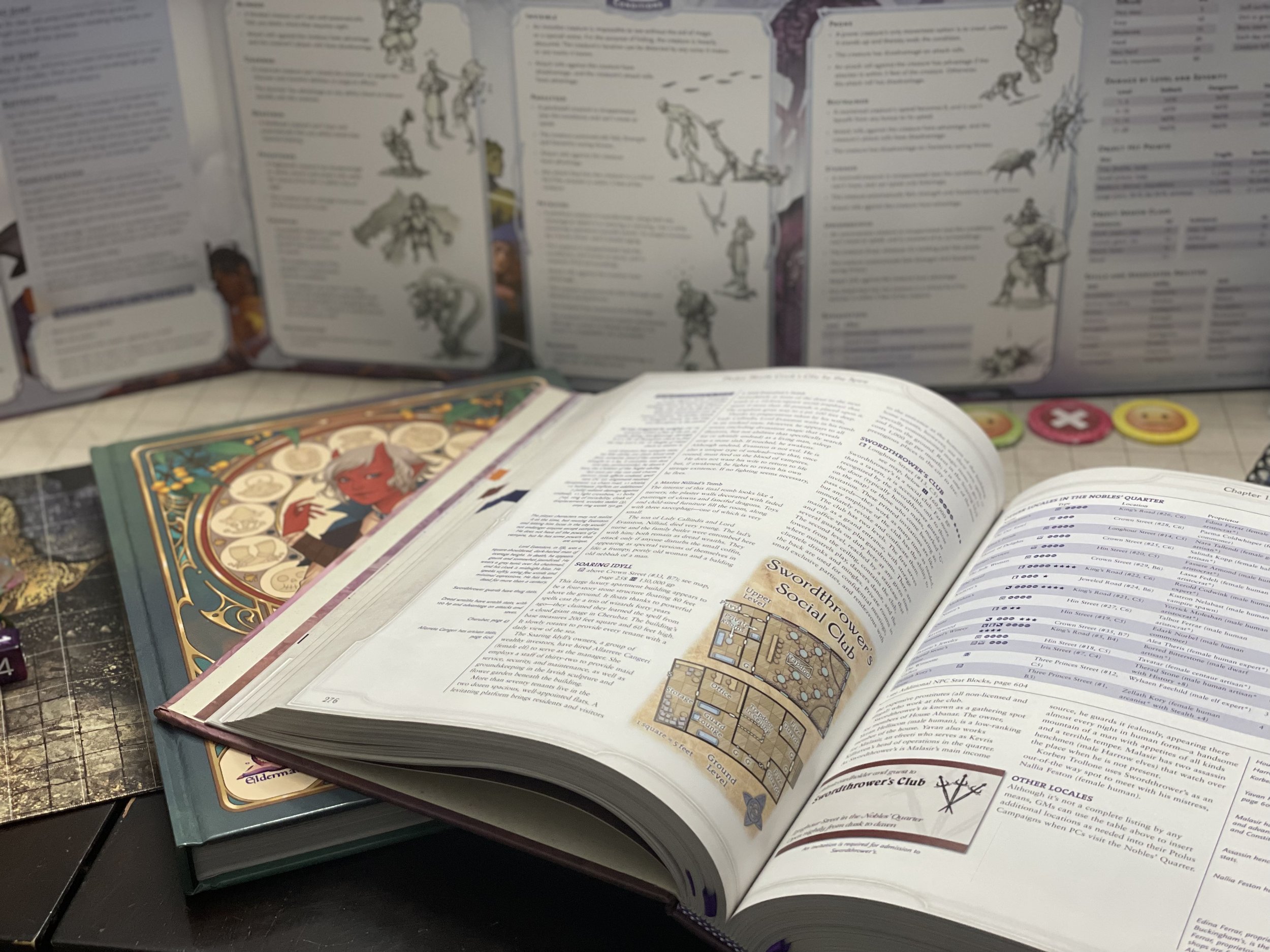How are Tabletop Role-Playing Games Played?
So now that we have an idea of what a tabletop role-playing game (TTRPG) is, and how it functions through being a game and through the device of the magic circle lets now discuss how TTRPGs are played.
As noted in the what are tabletop role-playing games article, there are two roles for players in TTRPGs. One player is the narrator of the story often called the Game Master or GM, while the other player type is the Player Character PC. The GM will create a world and a story for the PCs to engage with during gameplay. The PCs are characters that exist within the world of the game. The players will make in game choices that fit with what their character would like to do and to achieve.
Though TTRPGs are games with mechanics and rules, they often do not appear to be games. When I first introduced Dr. Ryan Kelly to Critical Roll he was about 45 minuets into the first episode and asked “so when do they start playing the game?” He did not see that the people at the table telling a story together was the game. The dice rolls are to there to help move the story forward and let the GM and other players know how well the PCs are doing with their actions in a gaming world.
In the most basic sense the GM will describe a scene or scenario, then will ask the player’s what their PCs are doing in response to what they said. For example:
GM: You walk forward and the fog seems to envelope you. Though your companions are no further from you than they were moments ago they suddenly feel as though they are miles away. The sound seems to both be deadening, and loud at the same time. There is an ominous feeling to the air. What do you do?
Player 1: I want to stop and listen, does it sound like something is around us?
GM: Roll an awareness check
Player 1: (rolls a d20) 14 with my modifier
GM: You listen and while this place is spooky you don’t sense anything following you.
Player 2: I don’t trust it I think we should try to move through here as quick as we can. I start leading the party forward.
GM: Make a tracking check
Player 2: 12
GM: You find the path but it is slow going. As much as you would like to push forward quickly you realize that if you move fast you are liable to lose site of the path.
Player 3: I don’t want to be off the path here. We best be prepared and stay on the path. Player 2 can you work on tracking while Player 1 and I work on keeping alert to ensure we are not ambushed?
It might be argued that the above is more improvisation with dice and while there is some merit to that argument TTRPGs are still games. The players all have agreed upon rules and goals. The goal in a TTRPG will often change in detail but generally the goal is to get through the story. The story might be a mystery, or a hunt, or a quest, the goal is for the group of players to successfully create the conclusion of that story.
How the story ends, and what plot points are found along the way depend greatly on how the GM runs the game and how the players interact with the content presented to them. Luck also can greatly impact game play. Luck or chance is represented by rolling dice or some other random generation tool, such as cards. Games will have a threshold that the players dice rolls need to meet for their plans to work. For example in the D&D system getting a higher roll on the dice increases the likelihood of success, while in systems such as Altered Carbon, players want to roll a low number to achieve success. No matter the number one is aiming for there is a chance of failure. Just as a musician might have an off night and not preform well, a PC in a TTRPG might not do well at their specific skill set.
The dice rolls tend to help show chance and can allow for interesting an unexpected outcomes. Depending upon the result of dice rolls the GM will narrate what happens next and the story will progress. The game comes to a close typically when the story has reached a satisfying conclusion. This might take weeks, months, or even years.
If you are interested in learning more about how to play different TTRPGs a great place to start is YouTube. There are many different live play shows, a web series where a TTRPG campaign is recorded and broadcast, many of which include overviews of the gaming systems they are using. Local game stores also often have open play events where new players can come in and learn how to play various TTRPGs. There are also online tools such as Roll 20 the Foundry and Fantasy Grounds that groups use to play TTRPGs. Online play can increase access but has additional challenges as one also has to learn how to navigate and use the online tool as well as learning the rules of the game.
One great thing about the TTRPG community is how many people are excited to teach new players how to play the game. It is easier than ever before to find GMs running sessions for new players and walking them through the basics of play. I firmly believe everyone could benefit from playing a TTRPG, at least once in their lifetime!
If you are interested in this topic please consider preordering my book through Norton If you use the code TTRPT20 you will receive 20% off your order!


